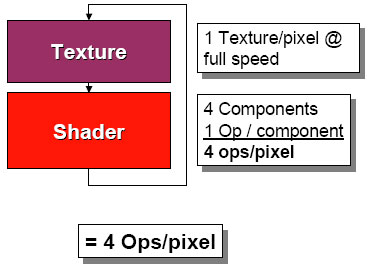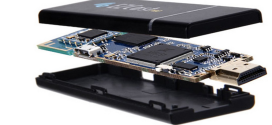Enthusiasts will simply love this card. Built from scratch, high-end GeForce 6 Series GPUs show huge technological advancements over the previous generation. Great performance and much improved image quality seem to be the two strong aspects of highly anticipated NV40 GPU.
Introduction
Before we start, please check out our NVIDIA GeForce 6800 GPU Highlights
The 6th generation of GeForce GPUs is here. A highly anticipated GeForce FX (high-end model) was not as successful as some might have thought at least not technologically-wise. NVIDIA has lost both performance and image quality crowns against the Radeon enthusiast part. However, the battle was pretty rampant in the mainstream and low-end markets. Both ATI and NVIDIA put out marvelous and affordable products. Apart from major quirks with NV3x architecture, NVIDIAs revenues have been pleasing and investors were quite happy last year.
Without going into much detail (due to time constraint since we received the product information yesterday), we would like to go over the new features and, most importantly, the latest technology behind GeForce 6800 and GeForce 6800 Ultra graphic cards — notice that FX part has been dropped from the name.
Features and Technology Overview
CineFX 3.0 Shading Architecture
- Support for DirectX 9 Shader Model 3.0
- Vertex Shaders 3.0
- Pixel Shaders 3.0
- Next-Generation Texture Engine
- 16 textures per pass
- 16-bit and 32-bit FP (floating point)
- NVIDIA High-Precision Dynamic-Range (HPDR) Technology
- Full floating point support throughout entire pipeline
- Support for new rotated-grid Antialiasing
- IntelliSample 3.0 Technology
- Advanced 16x Anisotropic Filtering
- Blistering-fast Antialiasing and compression performance
- Fast z-clear
- High-resolution Compression Technology (HCT) increases performance at higher resolutions through advances in compression technology
- UltraShadow III Technology
- Designed to enhance the performance of shadow-intensive games, like id Softwares Doom III
- Advanced Engineering
- 0.13 micron process technology
- BGA flip-chip package
- ~220 million transistors
- Core at 400MHz, Memory at 550MHz (1100MHz effective) Ultra model
- Designed for PCI Express x16
- Supports PCI Express high-speed interconnect (HSI) technology for bidirectional interconnect protocol conversion
- Full support of AGP 8X including Fast Writes and sideband addressing
- Support for the industrys fastest GDDR3 memory
- 256-bit advanced memory interface
- Advanced thermal management and thermal monitoring
- Advanced Video and Display Functionality
- Dedicated on-chip video processor
- MPEG video encode and decode
- WMV9 decode acceleration
- Advanced adaptive de-interlacing
- High-quality video scaling and filtering
- Integrated NTSC/PAL TV encoder supporting resolutions up to 1024×768 without the need for panning with built-in Macrovision copy protection
- DVD and HDTV-ready MPEG-2 decoding up to 1920x1080i resolutions
- Dual integrated 400 MHz RAMDACs for display resolutions up to and including 2048×1536 at 85Hz.
- Dual DVO ports for interfacing to external TMDS transmitters and external TV encoders
- Microsoft® Video Mixing Renderer (VMR) supports multiple video windows with full video quality and features in each window
- VIP 1.1 interface support for video-in function
- Full NVIDIA® nView multi-display technology capability
The NV4x lineup (6th generation GeForce chip) has been built from the ground up a totally new architecture. However, its essential to distinguish the two different models. The high-end enthusiast part (GeForce 6800 Ultra) is operating on 4 quads as opposed to 2 quads for NV3x. The GeForce 6800 Ultra GPU is a true 16 pipeline design (16×1 or 32×0); it can render 16 pixels per clock-cycle with 1 texture operation on pixel per clock (32 non color Z-reads/writes). The GeForce 6800 on the other hand is a 3 quad design — 12 pipelines (12×1 or 24×0). While these two chips share the same design, we believe the 4 extra pipelines can be somehow enabled.
Previous shader architecture (non scalar) could only process 4 operations per cycle
With the updated shader structure, a second shader unit doubles (theoretically) pixel operations per cycle. NV4xs superscalar architecture is capable of doing up to four instructions per cycle and eight operations per pixel per cycle. This type of approach is much more flexible as it carries out more throughput from the ALUs.
NV4x (natively) supports 32-bit floating point precision throughout the pipeline along with 16-bit mode which can be used interchangeably (mixed mode) to provide better performance while keeping the best image quality.
High-Precision Dynamic-Range (HPDR) is the latest technology to improve overall rendering process. To achieve this, NVIDIA followed OpenEXRs encoding standards. The rendering method can be divided into three tasks. However, before we go any further, let us examine HPDR requirements.
In order to make use of HPDR technology, a GPU must be capable of Floating Point shading / blending / filtering / texturing and storing colors. As weve mentioned a few lines above, NV4x carries native FP32 support. Floating Point Blending operation takes the pixel values and mixes them to attain final color value this could be best described with motion blur and soft shadow examples. FP Filtering operation basically cleans the pixels in order to sharpen an object or to smooth an edge. GeForce 6 GPUs provide for higher level precision including new 16x anisotropic filtering mode, which we will talk about later. With texturing operations, we apply textures to polygons. FP texturing will allow us for more realistic effects such as omni shadow maps, depth of field and ray tracing. Fully implementing HDR would not be achievable without sRGB (8-bit gamma color space) gamma correction and FP16 format for storing color this is a critical part of HDR rendering. In the end, the new rendering technology is fully supported by GeForce 6 family of GPUs.
Lets get back to the rendering methods. The whole HDR process can be separated into three tasks.
- Light transport
- Based on visible surfaces, light transport takes the geometry, texture maps, light positions and light radiances and outputs per-pixel radiance value for the reflected light
- Tone mapping
- At this point, the data from the light transport operation is mapped to color values. This procedure is known as tone mapping
- Color / Gamma correction
- This is the final task where color values are outputted to the monitor as red, green and blue color space. And since our eyes are very sensitive to bright light, gamma correction is required
Finally, new Antialiasing technique has been implemented by NVIDIA for the NV4x series of cards. Actually its not new at all, its been first introduced by 3DFX years ago. Its called Rotated Grid Antialiasing (RGMS Rotated Grid Multi-Sampling) an unprecedented pattern which should have been operational around NV3x era.
Figure 1
Figure 2
Until now, sub-pixels were sampled in a two-by-two grid pattern for each pixel also known as OGMS (Ordered Grid Multi-Sampling) shown by Figure 1, left image. Rotating the pattern of the four sub-pixels, this new technique provides sampling from a four-by-four diamond-shaped grid (Figure 1, right image). Figure 2 shows horizontal and vertical coverage the right image provides for much higher color accuracy, thus offering better edge smoothing. We would love to go through different Antialiasing modes; however NVIDIA did not supply us with a sample board.
While texture filtering wasnt top-notch on NV3x cards either, the introduction of GeForce 6 series might save me a few unwanted comments. First of all, texture filtering optimizations are not gone. We are referring to brilinear filtering which is a mix of bilinear and trilinear filtering something NVIDIA has been heavily criticized for. Those optimizations can now be disabled through driver control panel. Why those optimizations are there is another story. While we cannot test the new Anisotropic Filtering technique, it is worth mentioning that NVIDIA is using similar filtering pattern used by ATI. The only problem with that is that in certain situations 16x AF will act as 2x AF because of 45 degree angles its an optimization rather than a bug or lack of transistors.
NVIDIAs UltraShadow II is an interesting piece of technology though not yet exposed in current games. In simple words, it allows for better interaction between multiple light sources. UltraShadow II calculates those light sources within a specified area, providing more flexible calculations.
Graphic cards are no longer used exclusively for games. We often use those expensive devices for video recording and playback. NVIDIAs high-end parts are the first GPUs to feature an On-Chip Video Processor. Its a stand alone programmable sub-processor capable of MPEG2 encoding / decoding at hardware level.
Conclusion
We certainly cannot make an objective conclusion since we do not have the card in our hands. However, based on the information given to us, it looks like next generation GPUs from NVIDIA look very solid in terms of improvements and technological advancements. Without a doubt, the 6th generation is a vast leap over GeForce FX 5950 in terms of performance and image quality enhancements. While we believe having a review sample would greatly contribute to such an article, we promise to bring in retail product reviews within the next few weeks.
 Bjorn3D.com Bjorn3d.com – Satisfying Your Daily Tech Cravings Since 1996
Bjorn3D.com Bjorn3d.com – Satisfying Your Daily Tech Cravings Since 1996







